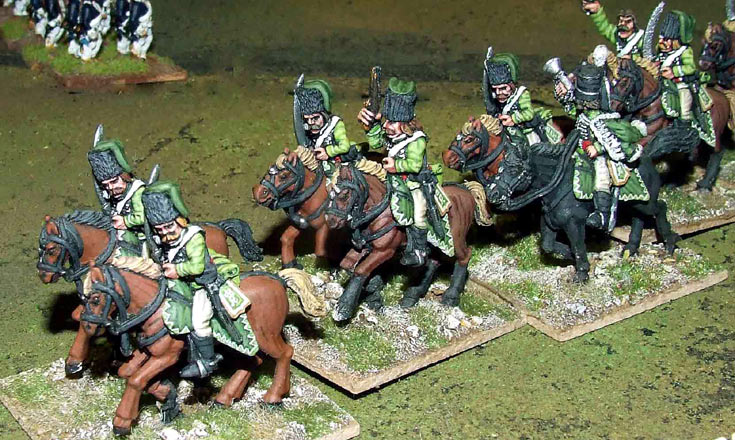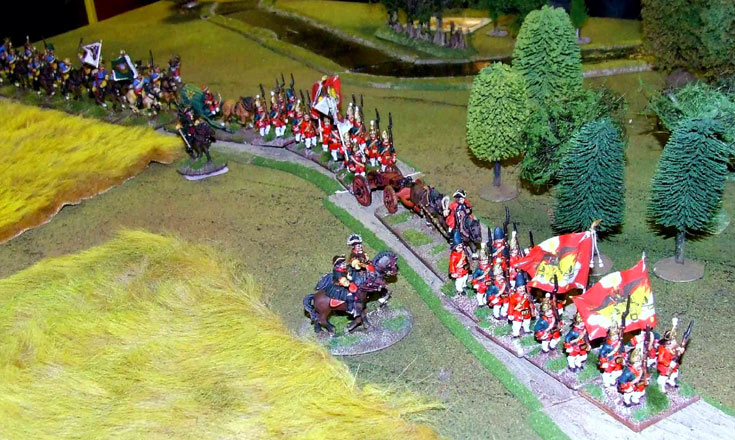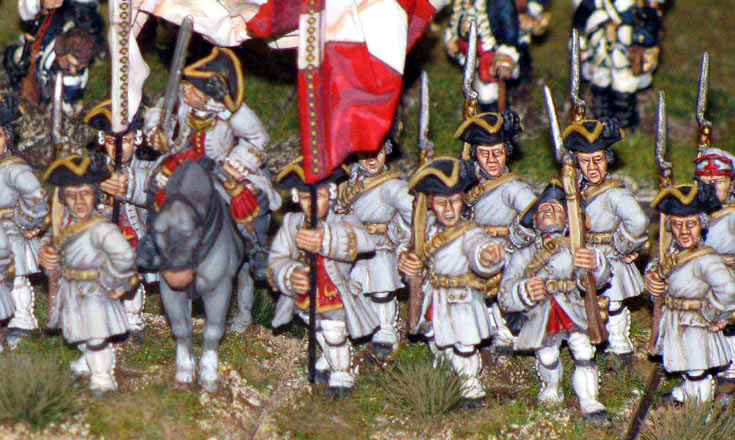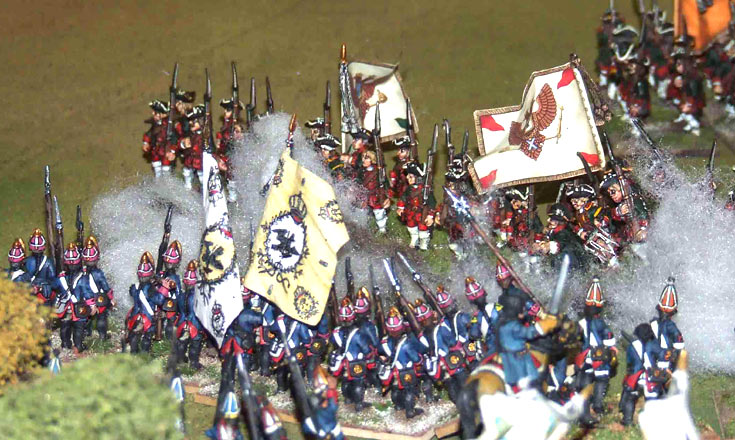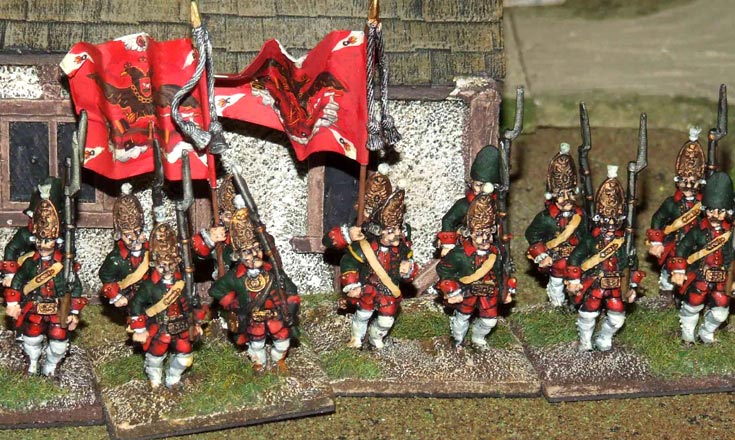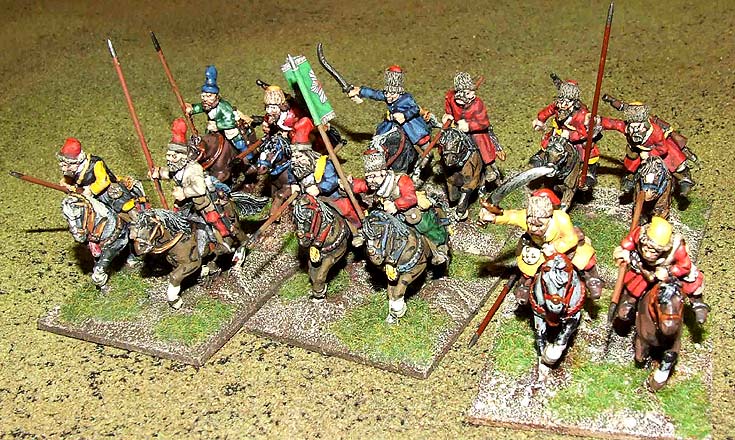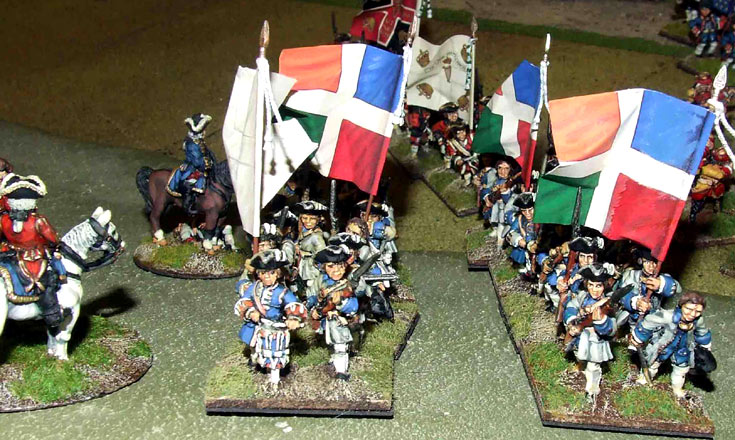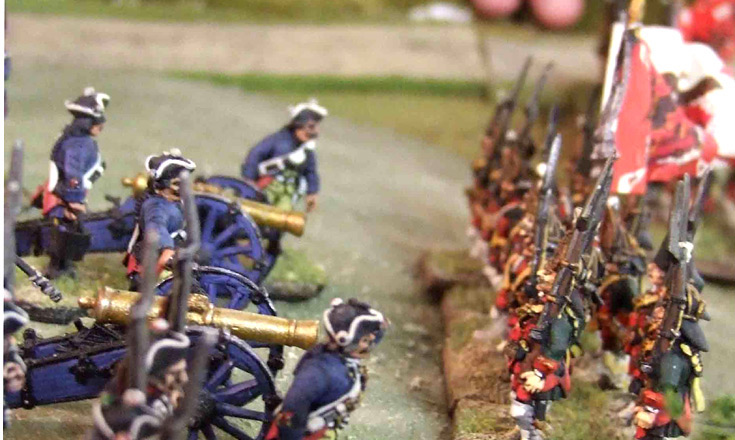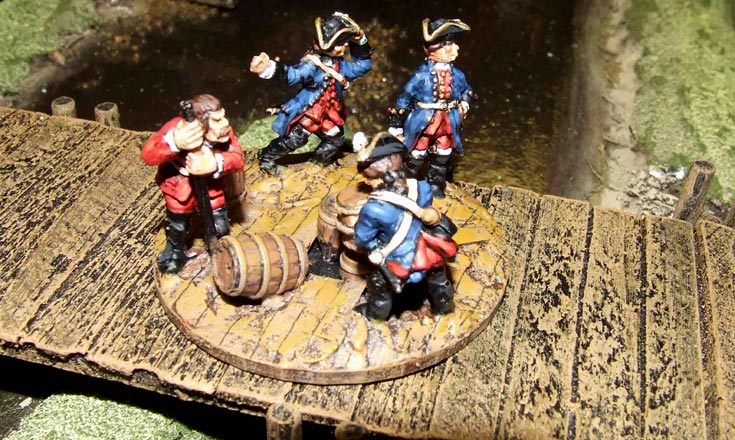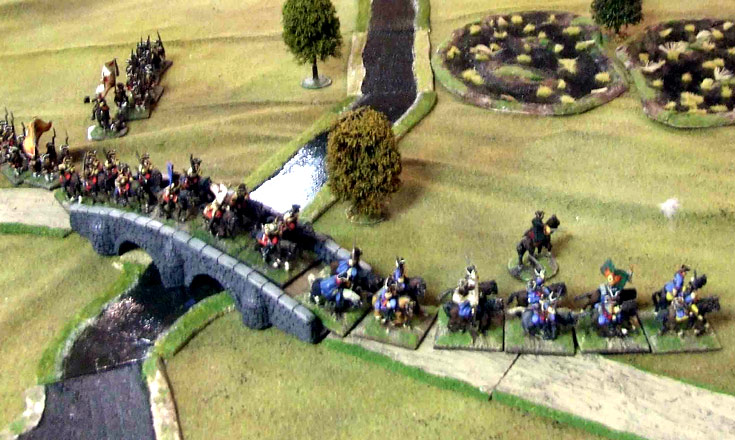Die Kriegskunst
The Seven Years War, Die Kriegskunst, 28mm This week we played out the “Bridgehead Breakout” scenario from Charles S. Grant’s Scenarios for Wargamers (1981). Like most of Charles’ scenarios, winning the game is harder than it looks. The Prussians (behind line G-H) were trying to break out of their bridgehead over the River Saale, although
The Seven Years War, Die Kriegskunst, 28mm The premise behind this little game was that a Russian raiding force had crossed the Elbe, and burned down a gun foundry on the outskirts of Berlin. It was now trying to get back to the Elbe and safety. This was loosely based on Totleben’s Berlin Raid of
The Seven Years War, Die Kriegskunst, 28mm We’d actually planned to play a much bigger game – a potential scenario for a potential scenario book. It was based on the French attack on Obensberg hill, the turning movement that led to a French victory in the Battle of Hastenbeck (26th July 1757). One of the
The Seven Years War, Die Kriegskunst, 28mm We decided to refight Paltzig (1759), a fair sized engagement between the Prussians and the Russians. We included it as one of the scenarios in Die Kriegskunst. The Russians were on the defensive, and the Prussians attacked the right flank of the Russian line. Actually, the Russian army
The Seven Years War, Die Kriegskunst, 28mm Sometimes games don’t go according to plan. This one was one of those, a small encounter battle between the Russians and the Prussians, where an outnumbered detachment of Russian grenadiers and Cossacks tried to hold on to a vital road junction. the aim was to escort through a
Seven Years War, Die Kriegskunst, 28mm This was another scenario taken from Charles S. Grant’s Scenarios for Wargames (1981), loosely based on Fontenoy. Our game though, was set in Silesia.The basics premise was that the defender (the Prussians in our case) had to hold two of three positions at the end of the game –
Seven Years War, Die Kriegskunst, 28mm This game was loosely based on the scenario by Charles S. Grant, published in the first edition of Battlegames magazine. We simply changed things a little to reflect the figures and the scenery we had available. The idea was that the Prussians had thrown a pontoon bridge across the Saale
The Seven Years War, Die Kriegskunst, 28mm This is another Charles S. Grant scenario, culled from his Programmed Wargame Scenarios (1983). This collection of scenarios could be played with either side “programmed” to follow set orders, or as a straight game. They’re designed to work well in any form. Our one involved a Prussian rearguard
Seven Years War, Die Kriegskunst, 28mm The aim of this game was to introduce new players to Die Kriegskunst, so we kept the forces very small – just a brigade-sized force per side. The premise was that while French engineers were desperately trying to prepare a bridge for demolition, a mixed force of line infantry,
Seven Years War, Die Kriegskunst, 28mm When we don’t want to do a particularly big game, and prefer someone else to do the thinking for us, we often resort to a Charles S. Grant scenario. In this case, we culled one from Scenarios for All Ages (1996), a little book he co-authored with Stuart Asquith. It
Older Posts››
‹‹Newer Posts
